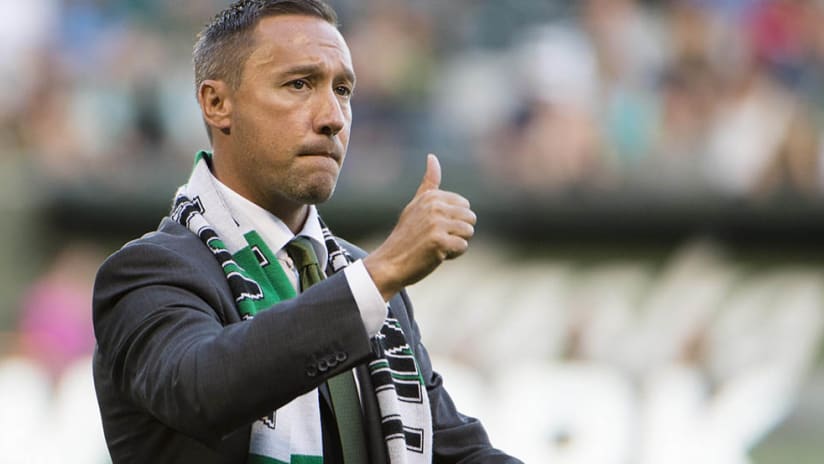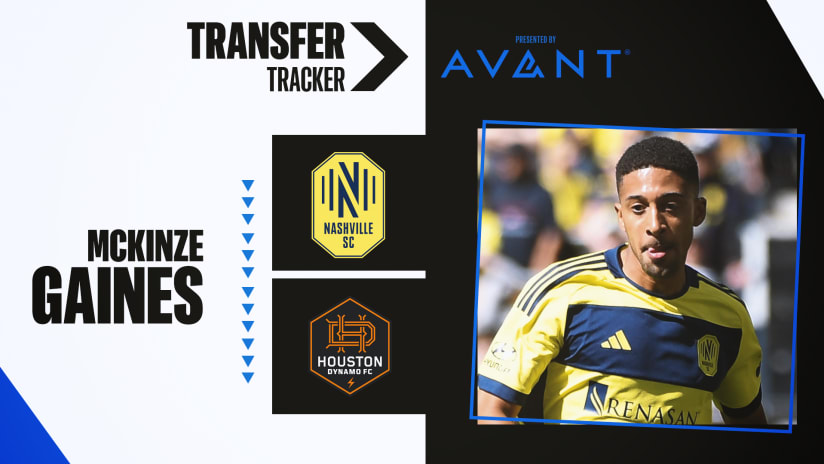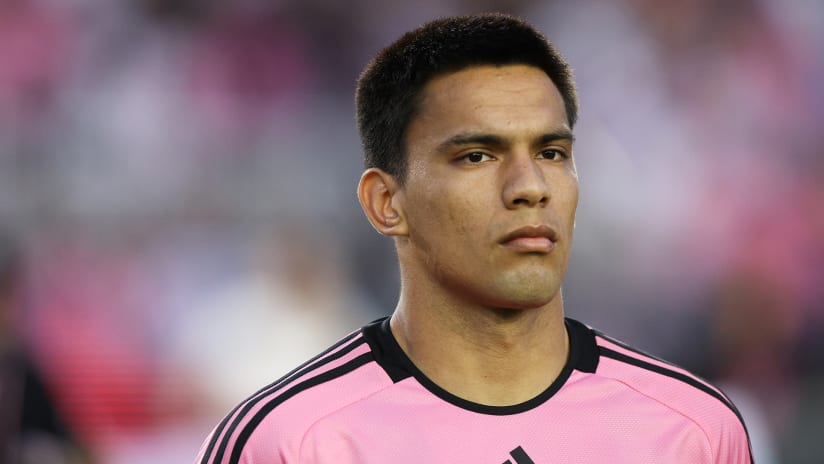Each week, Sam Polak breaks down the top coaching moves in MLS from the previous week. Here are his top five from Week 24.
5. Vako's first 90 minutes
San Jose Earthquakes coach Chris Leitch landed at No. 5 on this this week's list with his move to start Valeri Qazaishvili for the first time this season against the Philadelphia Union.
Vako did not wait long to reward his coach for this decision, scoring within just three minutes of kickoff. But the Georgian international did much more for the side during the match.
He used his knack for putting defenders and goalkeepers under pressure effectively. Below, despite the Union having four players around the ball, the angle and pace of Vako’s approach forced Philadelphia to have to play long in a situation when they shouldn’t really have had to given their numerical advantage.
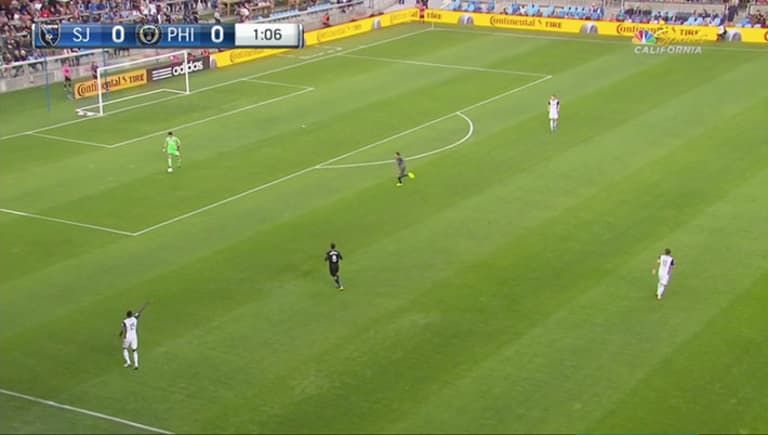
And even though the Union went up 2-1 in the 55th minute, the Quakes were the better side up until that point in the match — especially in the run of play. This was in large part thanks to Vako as well and his ability to alleviate the pressure on San Jose’s defense.
Given this performance, even though the game ultimately ended in a 2-2 draw, Vako has to see more time from Leitch given what he provided San Jose. If they can sneak into the playoffs, this forward could create some real trouble for opponents.
4. Carl Robinson’s plan for overcoming Houston's bunker
When the Houston Dynamo are the visitors, Wilmer Cabrera usually sets up the Dynamo to force the home team to come to them. This is part of the reason Houston have such a wildly different record away than at home, but also why they had conceded just a single goal in their three previous road matches before coming to Vancouver.
So what exactly does it look like when Houston force the home team to come at them? Take the last away game Houston played as an example. The Dynamo would not apply defensive pressure to hosts Real Salt Lake until RSL got to the midfield stripe. Houston essentially challenged RSL to try to break them down with 11 players in their defensive half.
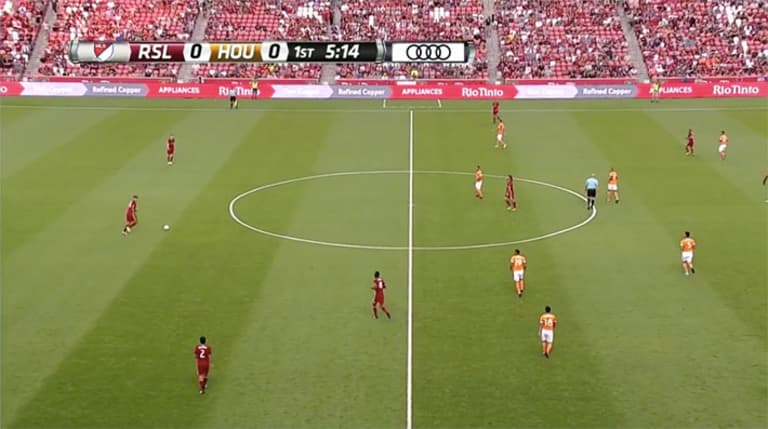
The Whitecaps coaching staff did their homework and developed a plan to combat this tactic.
'Caps head coach Carl Robinson used just two defenders to possess the ball out of the back. Since the Dynamo would allow the Whitecaps as much time as they really wanted in their own half, even if they were potentially outnumbered, two players were all that was necessary to start the buildup, as long as they kept their distance from half field.
He also made sure, when his side was building out of the defensive third, that they were patient and picked the right penetrating ball to bypass the first line of Houston’s defense. And once they were able to progress forward, unlike RSL above, they were able to commit many more players to the attack.
Below, in the leadup to the Vancouver’s penalty kick goal, they were able to get several players attacking the Dynamo backline:
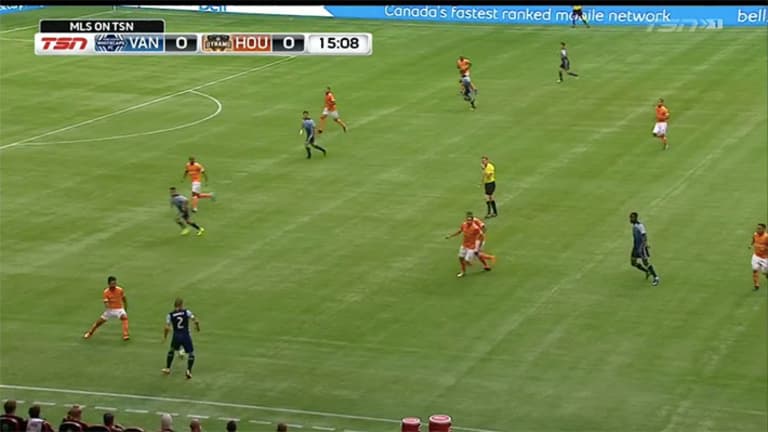
This goal was a key factor in propelling Vancouver to their 2-1 victory.
3. Montreal countering Chicago
Montreal Impact head coach Mauro Biello outwitted the Chicago Fire’s Veljko Paunovic when their sides clashed midweek. The Fire have been a quality team all season and will continue to be dangerous in the run up to and during the playoffs — regardless of their current losing streak. However, Mauro Biello may be on to something with the strategy he had his team execute on Wednesday, where his team won 3-0.
There are times when the Fire seem overly committed to the attack, both in number and in mentality. Playing against Sporting KC at the end of July, Chicago can be seen below with nine of their 10 field players way up the pitch. This scene led to a counterattack goal for SKC.

Against Montreal below, the Fire found themselves in similar circumstances.
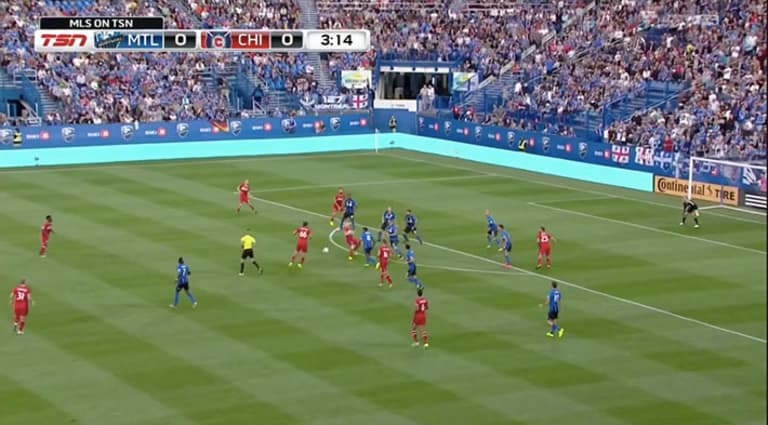
Ready to take advantage of moments like this, Montreal consistently looked to play the ball forward straightaway once they took possession away from Chicago. Transitioning quickly to the attack created a lot of quality opportunities that favored Montreal.
As a result of this game plan, Biello’s side was able to to isolate players like Ignacio Piatti 1v1 on the flank, which resulted in the third goal. Or sneak in passes before Chicago had adequately recovered their defensive shape, which resulted in the Impact’s second goal. Or create situations like that below — where, if Chicago made any misstep, the Impact would have sprung yet another counterattack from this 2v2 with ample space to attack.
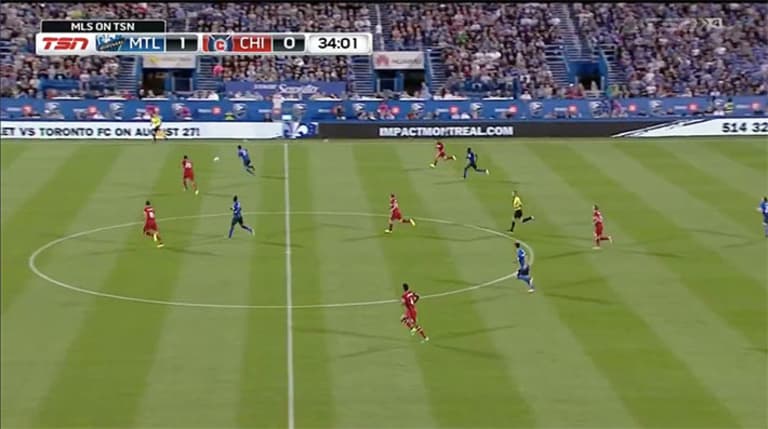
2. Medranda back at left back
Against FC Dallas, Sporting KC head coach Peter Vermes made eight changes to his starting lineup from their previous match— keeping just Daniel Salloi, Matt Besler and Tim Melia in the same starting position as they were in for SKC’s 1-0 loss to Seattle. Vermes had rested players for that match after Sporting's tense win over San Jose in the US Open Cup semifinals.
The specific recalibration that earned Vermes the No. 2 spot this week, as well as being the most interesting, was moving Jimmy Medranda back to left back. Medranda has played as a forward and a midfielder so far this year, but this was the first time Vermes opted to have him as one of his back four after the Colombian played the majority of 2016 at the position.
Sporting KC like to go forward with their outside backs, and had a different feel to their attack with Medranda out there instead of typical left back Seth Sinovic. Medranda’s pace added an extra point of concern for FC Dallas to have to worry about. What’s more, Medranda brought a different flare and style of thinking to that role.
Maybe it’s just me, but I can’t think of a time earlier this year where SKC tried a ball like this — where one outside back looked to get from the middle to the attacking third by connecting with the other outside back.
It’ll be up to Vermes and his staff to figure out how to best incorporate what Medranda offers without losing the quality Sinovic provides. But the fact that SKC got the 2-0 win and allowed just two shots on target against a quality opponent in Dallas will make those decisions a bit more challenging.
1. Caleb Porter’s halftime tweak
Portland Timbers coach Caleb Porter made a stellar adjustment at halftime as his side went on to a 2-0 victory over the New York Red Bulls Friday night. Porter used how tightly the Red Bulls were marking on defense to the Red Bulls' disadvantage.
In the first half, the Timbers' movement was not causing enough trouble for their opponents.
In the second half, Porter had the Timbers make first and second runs that were more complementary to one another given the Red Bulls defensive scheme. If the Timbers did not complete a pass to a player making a run, this movement still had the purpose of pulling a Red Bulls player out of position and creating space for the next run.
This happened below, where Darlington Nagbe dragged Fidel Escobar away and created space for Diego Valeri to enter, and Portland tried to combine from there.
Just moments later, the same approach created Portland’s winning goal. Darren Mattocks’ movement forward did just enough to pull New York’s Aaron Long slightly closer to his goal. Albeit slight, it was still enough to create the necessary passing lane and angle for Diego Chara to find the second run from Valeri, who then did the rest.
Without this adjustment, the Timbers would not have won this game. This fact lands Caleb Porter at the top spot for this week.

